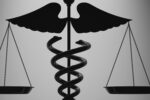Kristen Underhill is a Professor of Law at Cornell Law School and a Professor of Population Health Sciences at Weill Cornell Medical College (Department of Population Health Sciences). She holds a JD from Yale and a DPhil from the University of Oxford in Evidence-Based Social Intervention.
Underhill completed her postdoctoral work in HIV prevention in the Center for Alcohol and Addictions Studies at Brown University, then pursued five years of NIH-funded research at Yale Law School and the Yale Center for Interdisciplinary Research on AIDS. She was previously Associate Professor at Columbia Law School and the Mailman School of Public Health (Department of Population and Family Health), and she joined the Cornell faculty in 2021.
Her research interests focus on the relationships among law, incentives, and health behaviors, and her recent work has included projects on access to Medicaid, postpartum health, laws enabling minors to consent to health care services, laws on sexual health education, and laws affecting prenatal and postpartum substance use.
Underhill teaches courses in Health Law, Torts, Public Health Law, and Law and Economics.





